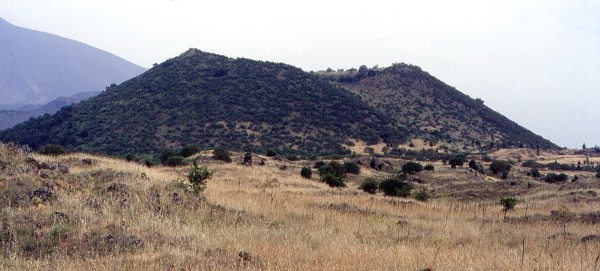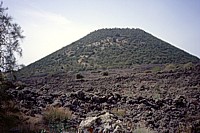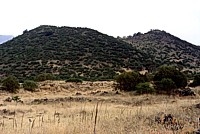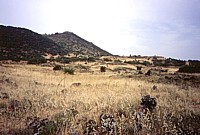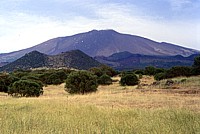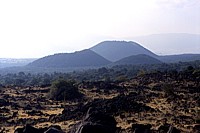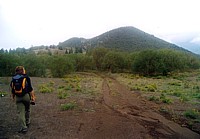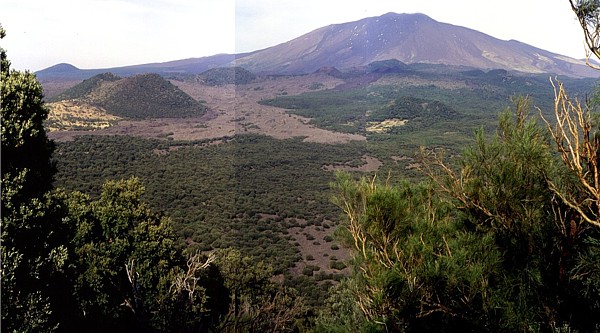| Etna
index |
||
| Geology | Geological history | Cones and craters |
| Eruptive characteristics | Eruptions before 1971 | Eruptions since 1971 |
| Etna and Man | References | Web sites |
| Weather forecasts | FAQ | Latest news |
Mamma
Etna's countless children
Monte Ruvolo
W flank, 14.89315° E, 37.74952° N
Summit elevation: 1413 m (N rim of crater)
![]()
Among
the numerous pyroclastic cones on the western flank of Mount Etna, Monte
Ruvolo is one of the most conspicuous, rising more than 170 m above the
surrounding landscape. In spite of its youthful shape and the relatively
sparse vegetation cover, the date of its formation probably falls into
the prehistoric period (but it has to be acknowledged that reasonably
reliable records of eruptions on the western flank begin only with the
17th century).
Monte Ruvolo is morphologically relatively simple, with its cone being
slighly elongated in N-S direction, and a single summit crater less than
300 m wide whose rim is lowest on the W side where a prominent notch overlooks
a low irregular shield that built around one or more effusive vents at
the western base of the cone. A poorly vegetated lava field extends from
that shield to the west. On its southern and southeastern side, Monte
Ruvolo is surrounded by the lava field emitted from Monte Nuovo during
an eruption in February-March 1763.
I climbed Monte Ruvolo only once, on the evening of 19 October 1999, in
order to obtain a good view of the lava flows moving down the western
flank of Etna from the Bocca Nuova. Photographs of the cone from its base
were taken during several excursions in the summer of 1999, which are
displayed on this page.
Copyright © Boris Behncke, "Italy's Volcanoes: The Cradle of Volcanology"
Page set up on 15 December 2003, last modified on 21 February 2004

